If you’re planning a trip to First Landing State Park, you should definitely do your research before going. This is a First Landing State Park travel guide including what to do, why you should visit, and more!
Contents
- About First Landing State Park
- History
- How to Get to First Landing State Park
- Entrance to First Landing State Park
- Best Time to Visit First Landing State Park
- Wildlife in First Landing State Park
- Things to Do at First Landing State Park
- Things to Do Near First Landing
- Where to Stay at First Landing State Park
- Additional Virginia Beach Travel Resources
About First Landing State Park
Just outside of Virginia Beach is the historic and beautiful First Landing State Park. Located at the site of the first landing of English Colonialists, the park covers a vast area of 2,888 acres with 1.5 miles of beach.
The historical park is one of the most stunning and diverse in Virginia, with varying topography from dunes to swampy forests. You can quickly lose yourself in the beauty for hours on end.
While the park may not be as famous as Shenandoah National Park or some of the national parks in Virginia, it is the most visited and largest state park in Virginia.
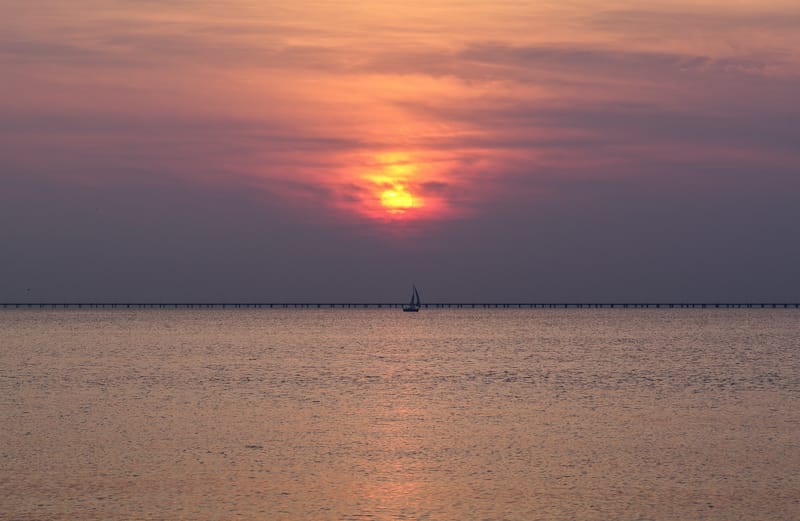
First Landing State Park draws in people looking to enjoy the amazing trails, boating, and historical activities within its boundaries. It truly is the location for the best day hikes in Virginia Beach (without a doubt)!
This guide will take you through everything you need to know about visiting First Landing State Park and the best things to do in and around the park.
History
First Landing State Park, or Seashore State Park, as it was originally called, was the first state park created in Virginia. The park is located at the site of the first landing of British Colonists in the New World in 1607, before they headed north to establish the settlement of Jamestown.
Blackbeard Pirate History
Because the colony started to thrive thanks in part to the budding tobacco trade, the famous pirate, Blackbeard, moved into the area and utilized the dunes as a vantage point to spot merchant ships to plunder.
Eventually, his luck ran out and the Royal Navy caught on to his antiques while the pirates raided a vessel coming in from the east.
Blackbeard was quick to unload his treasure and bury it in the dunes before being captured and killed while heading south to his North Carolina hideout.
To this day, no one has ever found his treasure, but it is rumored to be protected by his spirit, and as dusk falls, his ghost supposedly haunts the dunes.
Becoming Virginia’s First State Park
In the early 1930s, work began to turn the area of the first landing into a beautiful state park and over 1000 acres of land was donated to the cause.
The park was built by the Civilian Conservation Corps which laid the roads and built many of the structures found within the region. Seashore State Park opened in 1936 as Virginia’s first planned state park and quickly grew in popularity.
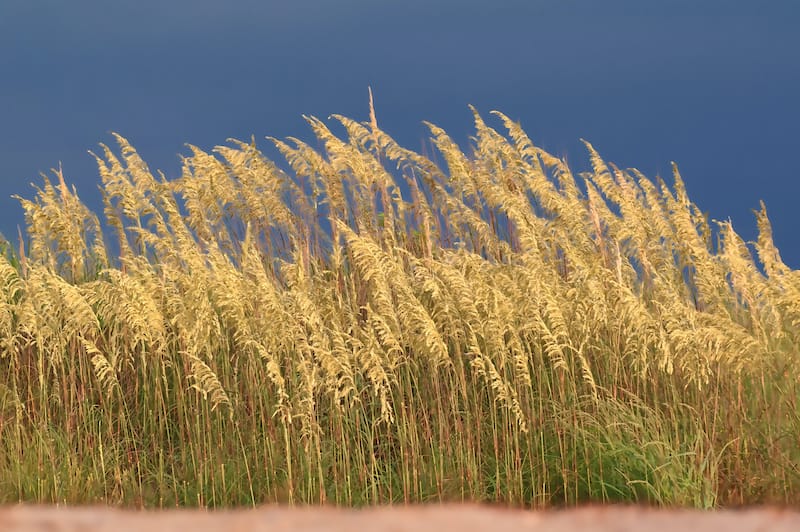
Within the park, a stone cross was erected to mark the place of the first landing, and subsequently, in the 1990s, the park was renamed to be the First Landing State Park to celebrate its historical importance.
The entire park is part of the National Register of Historic Places.
How to Get to First Landing State Park
There are two main options for reaching First Landing State Park- either by car or trolley. The easiest way to reach the park is by car, with several entrances located around the park.
On the north side of the park is the Route 60 / Shore Drive entrance, which is the park’s main entrance and where you can find many of the park’s amenities.
From the main entrance, you can also access First Landing Beach. Opposite the main entry point is a second entrance, where you will find the overnight cabins, Trail Center, and the start of some of the First Landing State Park trails.
On the south side of the park is the 64th Street entrance, where you can find access to the boat slip, hiking trails, and biking trail.
Alternatively, during the warmer months, a bus service runs between Virginia Beach and First Landing’s Main Entrance. You can catch the bus from various points along Pacific Avenue in Virginia Beach, with buses running around every 45 minutes.
The bus only accepts cash, but within the resort area, there are places where you can purchase tickets in advance with a card.
Entrance to First Landing State Park
There is a fee of $7 per car on weekdays and $10 on weekends from April through October. However, if you arrive at the park on foot or bike, the park is free to enter.
For those planning to bring a boat, there is an additional $5 charge to use the boat ramp. There are cabins and campsite spots that you can rent for varying prices.
While pets can visit for free during the day, there is an additional charge for pets if you plan to stay overnight.
Best Time to Visit First Landing State Park
The most popular time to visit First Landing State Park is during the summer months when the weather is warm and the sun shines down on the park and beach.
Due to its popularity during summer, the park can get very busy as locals and tourists flock to escape the busy shores of Virginia Beach.
During the height of summer, the park’s temperatures can soar, and it is advisable to bring plenty of water with you even though many of the trails are shaded by foliage.
During spring and fall, the temperatures are cooler than summer, and exploring the park is a little easier. Due to the cooler temperatures, fewer people visit the park and you will find the beaches and walks relatively empty.
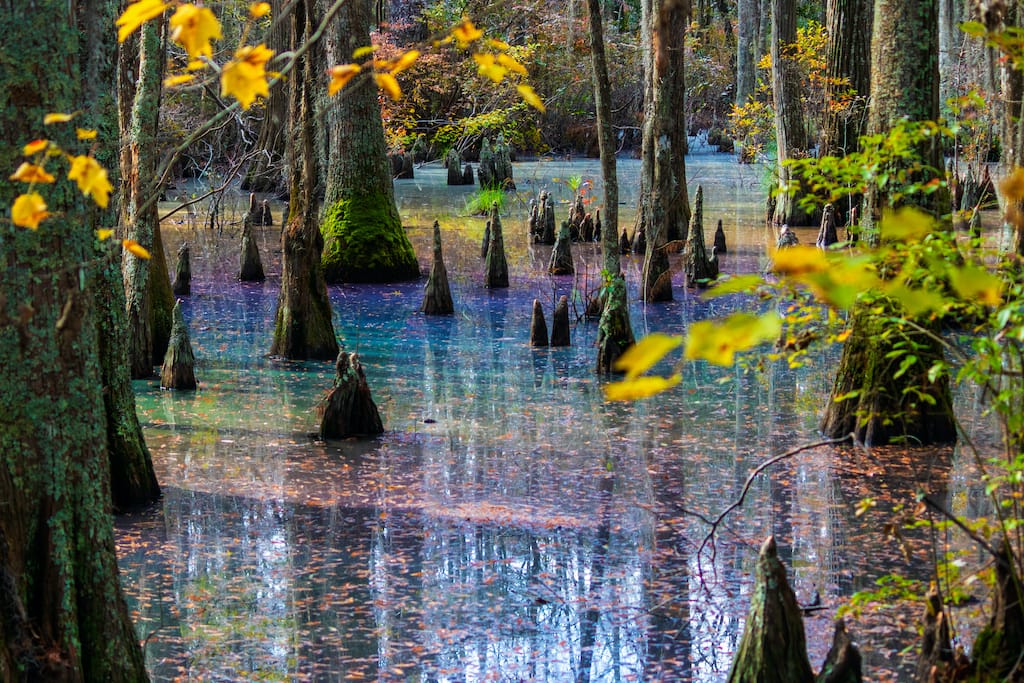
During this period, much of the park remains open, although the bus between Virginia Beach and the park may not be running or on a much-reduced service.
While some of First Landing State Park shuts during the winter, there is still plenty to do. As the temperatures drop, the walks and trails remain open for visitors.
The landscape changes through the winter with the deciduous trees bare of leaves and fog occasionally descending on the park.
Much of the wildlife remains in the park over winter, but the reptiles and amphibians tend to hide away from the cold. During winter, the campsite closes, but the cabins are still available to rent.
Wildlife in First Landing State Park
The park is home to a diverse range of creatures, from reptiles to larger mammals.
In the swampy areas, turtles and lizards bask in the warmth and large birds hunt for fish. The main predator in the park is the bobcat, although it is rarely seen.
You may be lucky enough to see whales, porpoises, and dolphins out at sea or in the Chesapeake Bay during the winter.
Things to Do at First Landing State Park
The park is a treasure trove of things to do, and you can easily keep yourself entertained for a whole day or longer. The following list includes the main activities available in the park.
1. First Landing State Park Hiking
Throughout the park, you will find 19 miles of trails spread over nine different routes. The paths will take you through various topography, with wooden walkways raising you above the swampy waters below.
Along some of the trails, there are small detours where you can learn about the area’s history and how the CCC created the state park.
While eight of the tracks are only open for hikers, Cape Henry Trail is open for cyclists. Near the main entrance of the park is the Trail Center where you can find out information about all the trails through the park and it is also the main starting point for many of the routes.
While hiking, it is vital to stick to the designated routes, as venturing off the paths can damage the delicate ecosystems contained within the region.
2. Go Boating
A unique way to explore the park is via its waterways and bays. Boating options are available from the southern entrance via The Narrows, where you can find a boat ramp and a place where you can rent kayaks, canoes, and various other boats.
From The Narrows, you can access Broad Bay and Lynnhaven Bay. It is possible for those with their own motorboats to reach the open Atlantic Ocean via Broad Bay.
Boat rental is available throughout the summer, although motorboats are not available for rent. To launch your own boat, you will need to pay a $5 fee to use the ramp unless you stay overnight in the park when the cost is waived.
If you plan to fish while using your boat, you will need to hold a valid Virginia Saltwater Fishing License.
3. Visit the Beach
The 1.5-mile First Landing Beach is located in the north of the park and is one of the park’s biggest draws. Given its more secluded location, the beach tends to be far less crowded than the beaches found within Virginia Beach.
There is no lifeguard at the beach, but swimming is allowed at your own risk. The water tends to be relatively calm.
The beach should only be accessed via the four boardwalks that will take you through the dunes, as stepping on the dunes can damage the fragile plant life in the area.
There are various amenities near the beach, including showers and a shop where you can grab supplies. There is also a beach at The Narrows; however, swimming is strictly prohibited.
4. Take a Naturalist Tour
One of the best ways to learn all about the park and the nature contained within is by taking a fantastic Guided Naturalist Tour.
Your expert tour guide will take you through the park and talk you through its natural beauty. Along with learning all about the nature in the area, the guide will talk you through the fascinating history of First Landing State Park.
The tour runs during spring and fall and should be booked at least two weeks in advance to ensure it can run. The tour departs and returns to and from Virginia Beach.
>> Click here for tour rates and availability
5. Check Out Historical Buildings
Dotted throughout the park are various historic buildings that mostly date back to the park’s creation in the 1930s.
Along with the important buildings used to create the park, there is a large stone cross, where the first landing took place. There are some more modern structures throughout the park used to demonstrate how various people lived in the area, including America’s indigenous people.
6. Photograph the Rainbow Sheen
In late fall, it is sometimes possible to witness a rare phenomenon in Cypress Swamp. As the leaves fall off the trees and into the swampy waters where they start to decay, they release oils that float to the surface, causing a thin film of oil.
When the sun hits the usually black swampy water at the right angle, it creates a rainbow effect that streaks across the water.
Sadly, to witness this magical sight, you need the perfect conditions, and those are rarely guaranteed.
Firstly, the oil film is incredibly delicate, and the water needs to remain undisturbed for an extended period for it to occur. The longer the water has remained still, the more vibrant the rainbow will appear.
Secondly, you need to be in the right place at the right time as it depends on the sun hitting the swamp at the right time, which will change each day.
Finally, there needs to be enough decaying vegetation in the water, so the best chance of witnessing the beautiful sheen is during late fall when the leaves have almost all dropped.
Things to Do Near First Landing
The park is located close to the cities of Virginia Beach and Norfolk, which are both hives of activities and a great contrast to the park’s serenity.
Norfolk is a hub of cultural sites and activities, including a fantastic art museum.
While in Virginia Beach, the beachfront is bustling with bars and restaurants where you can chill out as the party scene ramps up.
A visit to Jamestown, one of the best day trips from Richmond and Virginia Beach, will complete the experience and provide a little more context to the historical significance of First Landing State Park.
Where to Stay at First Landing State Park
Within the park, there are cabins available to rent year-round that are spacious and comfortable. A cabin’s price depends on the season and length of stay, although a week’s minimum stay is required during the peak periods.
Alternatively, for a wilder option, you can camp in the park between spring and fall. There are over 200 camping spots throughout First Landing State Park, with varying degrees of comfort and amenities.
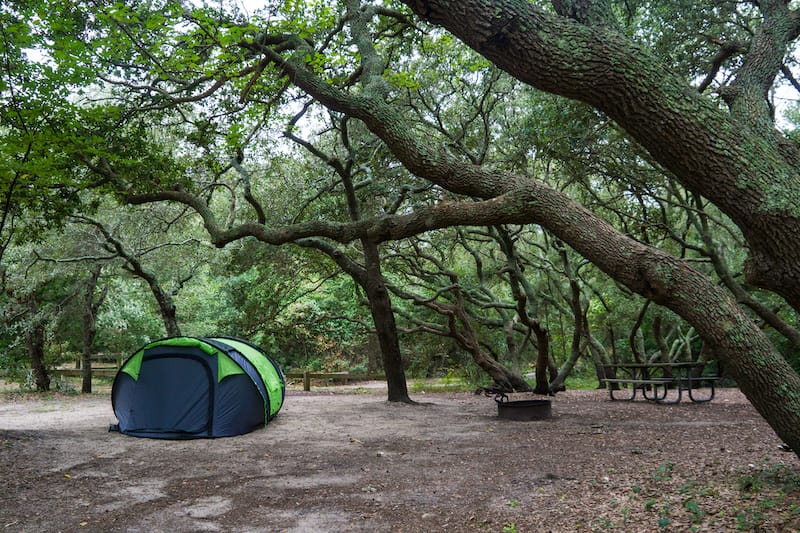
Each First Landing State Park camping spot includes a table and a grill where you can safely cook food without damaging the environment.
To avoid disappointment, it is advisable to book in advance. Pets are allowed to join their families, but there is an additional cost per night per pet.
First Landing State Park is close to an active military practice range, and while it poses no danger, it is common to hear loud noises and low flying aircraft throughout the night and day time.
>> Click here to reserve your camping spot or cabin at First Landing
I hope that this guide encourages you to take advantage of this park and plan a trip to First Landing State Park. If you have questions about visiting First Landing, please leave us a comment!
Additional Virginia Beach Travel Resources
- Best hikes in Virginia Beach
- Best Virginia Beach timeshare resorts
- Camping at First Landing State Park
- Best lighthouses in Virginia
- Best RV resorts in Virginia
- Top attractions in Virginia Beach
- Best beach towns in Virginia
PIN IT FOR LATER!

Megan is a travel blogger and writer with a background in digital marketing. Originally from Richmond, VA, she has lived all around the world (including Germany, Finland, Norway, etc) but her heart always finds its way back to Virginia. This blog is to help encourage travelers to explore the great state of VA… and its wonderful neighbors! Megan has written for or been featured by National Geographic, Forbes, Lonely Planet, Fodor’s Travel, the New York Times, and more. She has visited 45 US states and 100+ countries… and wholeheartedly believes that Brunswick Stew is probably the greatest food to ever exist.
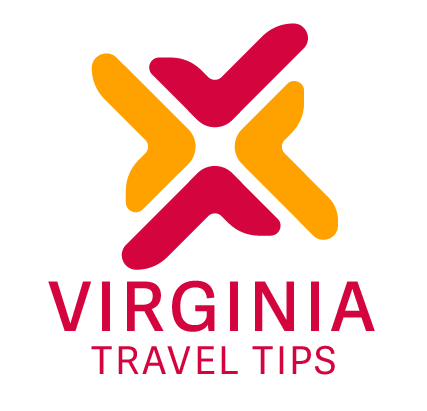
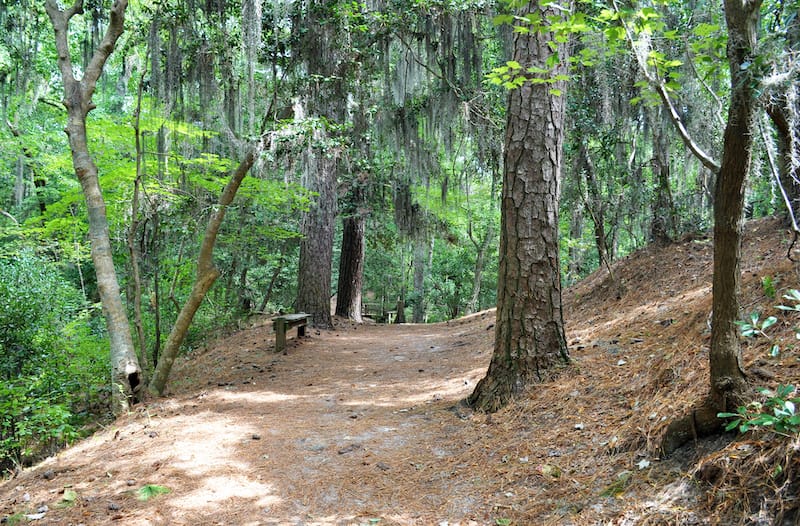
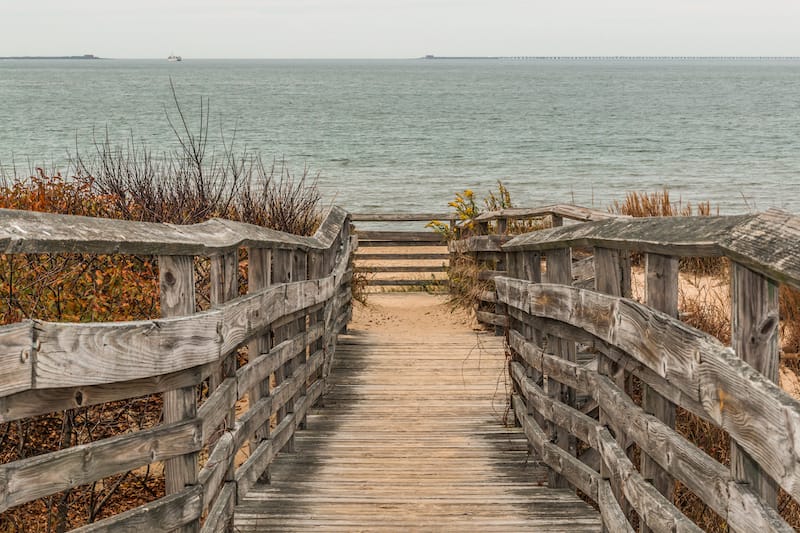
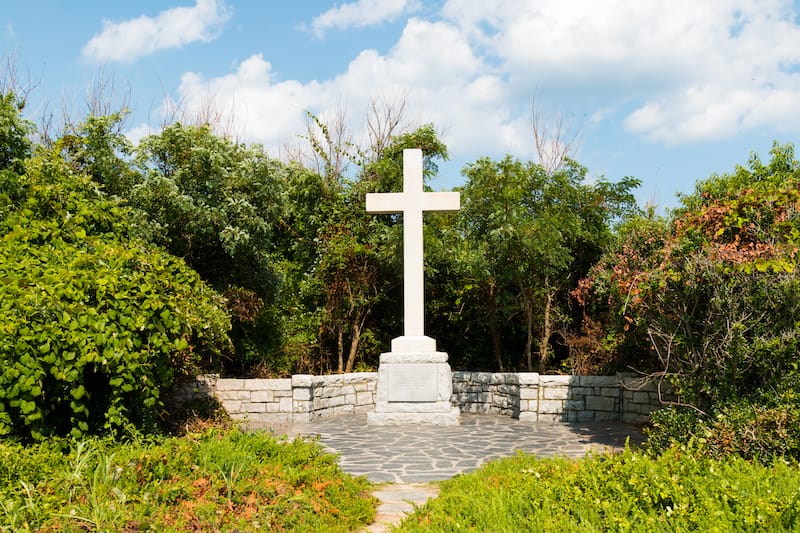
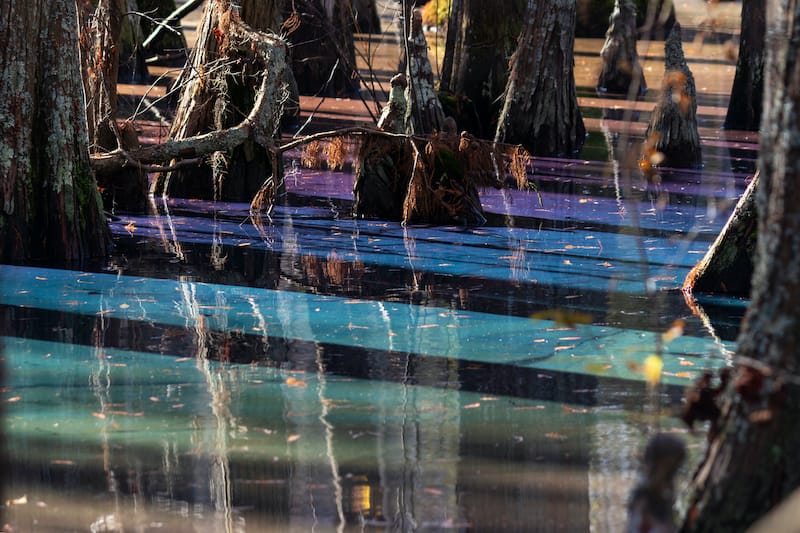

Parking now is $7 except on weekends in April through October when it is $10.
Admission is $7 for weekdays and $10 for weekends
Once in a while, I stumble on a diamond in an otherwise rough internet. This site is one of them. These moments are rare and I’m happy to share my appreciation to the author. I am a fan of early American history, having discovered family roots dating back to some of the earliest arrivals. In time, it’s conceivable that I may learn of a kinship to the original pioneers landing at this very spot. This article is both informative and educational, and it has piqued my interest in the park. This is the very sort of place I love to explore and it will be added to my bucket list. Thank you!